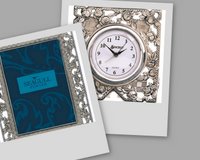

Having mastered the Laws of Search Engine Optimization (SEO), you are now receiving good traffic (visitor numbers) on your website. Your challenge now is converting this traffic from Visitors to Buying Customers. The whole conversion exercise, among other things, requires a website that has a good design. Notice I say a “good” web design. The website does not have to be perfectly designed, with Flash or fancy scrolling effects. It has to be good – something your Visitor (Potential Customer) can navigate through easily. But moreover, your website has to offer products or services that:
1)the customer wants; products they realized as a need and the benefits of your product or service
2)are priced competitively compared to similar products or services offered on other websites
Oh, Yes! You can attract Visitors to your site and then entice them to migrate around your website with offers like Savings, Discount, and Free Shipping. But, at the end of the day, your Potential Customers will shop and compare. With comparative shopping tools like Froogle, the buying public can easily compare prices: item for item.
Having worked in a family-run grocery store, in addition to co-owning a franchise health and life style business with my wife, I know that the practice of selling and merchandising in these 'mortar and brick' businesses applies equally well to the world of online web-based shopping.
As a Merchant, your challenge is to raise the bar, eliminating the item to item price comparisons. Stop the 'onesy twosy' product comparisons and create a greater value for the customer. Here is where solid merchandising practices take effect.
In the world of retail, merchandising is the difference between selling one product and selling volume. To do this effectively, you must consider:
1) Product placement (on the website and web page rather than on the shelf or display window)
2) Product Value Bundles (the benefit of buying more or a complete set)
3) Pricing for a higher value product bundle (buy more save more)
4) Create Value Groupings around seasonal or special events (sell to emotionally charged events)
Look at your products item by item:
1) Place items in customer logical categories, then
1. create icons, buttons to easily identify the items(s) and
2. allow the customer to migrate there (easily and within three or fewer number of clicks)
2) Group individual but related products into NEW Product Bundles
3) Price these New Product bundles showing savings of 10, 15, even 25%
Follow these points when merchandising your products and you will have succeeded in
1.Increasing your average order size
2.Reducing the one-to-one price comparisons
3.Giving the customer a more valued product.
For online selling, merchandising is the key element in Retail Sales.


No comments:
Post a Comment